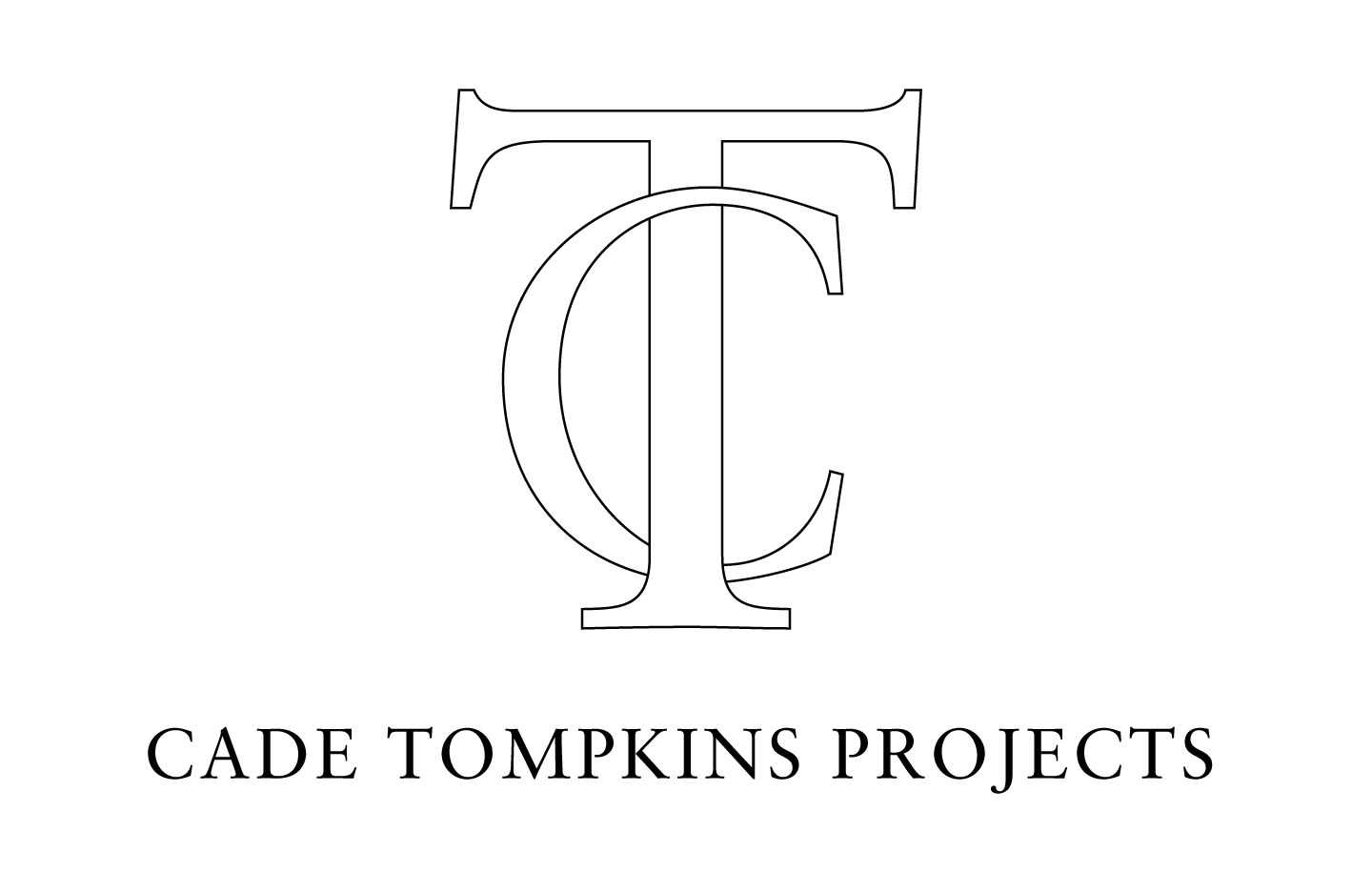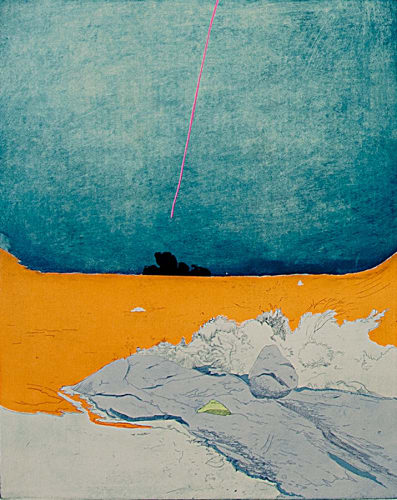from Volume 5, Number 6
March/April 2016
Edition Review
Allison Bianco uses printmaking to explore her relationship to her memories of her native Rhode Island through a combination of technical experimentation and art historical references. In her recent work, these landscapes have increasingly symbolized the juxtaposition between memory and reality, and the impact of nostalgia on the reliability of her own experience of place. In prints that are often brightly colored and large in scale, Bianco represents recognizable, popular sites-often those that serve as family vacation destinations, such as Block Island, Narragansett and Matunuck. As in recollection, these places appear stylized, warm and bright, but there are persistent hints of instability that belie their idealization.
Later that Day at Second Beach (2014) shows an expansive view of Sachuest, known colloquially as Second Beach. A popular summer destination for Rhode Islanders, it is known for its sandy vistas and rocky formations-seen in the foreground. Bianco's image, however, appears entirely unpopulated. The beach extends across only the very foreground of the print, giving the rest of the composition over to a rich blue sky punctuated with stylized, screenprinted fireworks. These decorative pyrotechnic arcs allude to Hiroshige's woodcuts of Edo and their dreamlike relationship to present-day Tokyo-a connection that interests Bianco.
Like much of Bianco's work, Later that Day is built from multiple sheets of paper-in this case six-presented in two rows to form a panoramic view. A compositional strategy devised primarily for its practicality given the size of printing plates, this division into numerous "tiles" emphasizes the sense of fractured memory. Although it is not immediately evident, each sheet marks a different state of the same plate, and intaglio, screenprint and chine collé details are added and subtracted to differentiate them. The blue of the sky is printed unevenly throughout, migrating further toward the margins with each printing. The subtle but meaningful differences in detail throughout the sheets cause the familiar to seem foreign, a sense reinforced by Bianco's tendency toward bright, nonnaturalistic colors, such as the day-glo orange water and hot pink rocks here.
These formal and technical choices, taken together, render the landscape specific yet timeless, personal and emotionally ambivalent.Bianco leads the viewer through her own memory of a place, translating experience through process.


